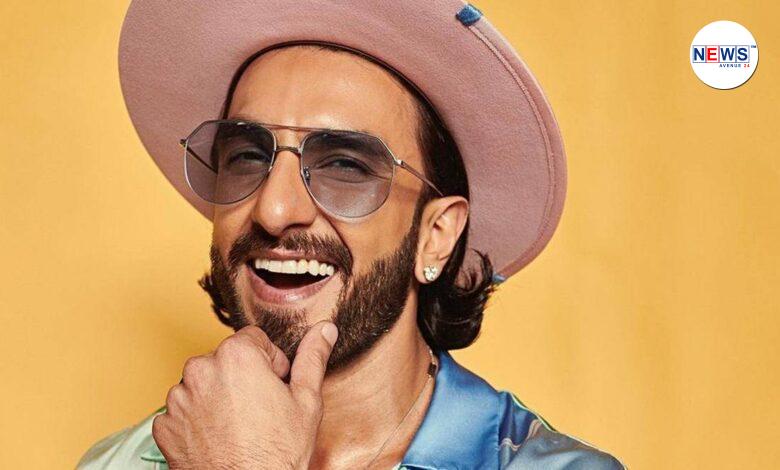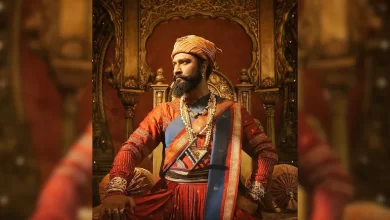
As the era of superstardom ends, how Ranveer Singh emerged as the modern Indian hero
On Ranveer Singh’s 37th birthday, here is looking at the actor’s decade-long career as an actor and his emergence as the true modern hero of Indian cinema.
Box office numbers and critical reception alike are ample proof of the fact that in the past half decade, the star-system fuelled machinery of the Indian cinema landscape is no longer a viable, lasting model for the survival of the industry as a whole. While films starring the three Khans have failed to deliver as per expectations, the gradual breakdown of the superstar system has given rise to a different kind of star vehicle – a slew of younger actors along the likes of Rajkumar Rao and Ayushman Khurrana who have delivered content that has been simultaneously commercially viable and at the same time critically palatable.
The success of films by these actors has repeatedly proven that New-Age Bollywood has to be defined by cinema that finds a perfect balance between high concept and a viable packaging formula that will allow the producers to boast of substantially high numbers. And such a balancing act is perhaps best embodied in the stardom enjoyed by Ranveer Singh – who has not only established himself as one of the leading men of the industry but also as an actor who is able to calibrate his acting capacities within the demands of a wild range of genres. Beyond his infectious energy in interviews, offscreen interactions with fans and outrageously provocative fashion choices, in many ways, Singh is truly the modern Indian hero.
He broke on the scene opposite Anushka Sharma in 2010, with Maneesh Sharma’s sleeper-hit Band Baaja Baaraat, which was a romantic comedy woven around two entrepreneurs in the wedding business in Delhi. Singh, in a performance that perfectly embodied the charm of a boy-next-door, got everyone thinking of himself as someone hailing from Delhi – so perfect was his hold over the local mannerisms and language. Singh, who spent days prepping for the role in several Delhi University colleges, was hailed by multiple people as a talent to look out for.
The fact that Singh had no intention of slotting himself became amply evident with one of his next choices, Lootera, directed by Vikramaditya Motwane. Here, Ranveer presented a side to himself that was not seen before, essaying a character that was mysterious and brooding in complete opposition to his boisterous off-screen persona. He got immense critical praise for his deeply calibrated performance – one that reached an intensity of ferocious heights in the climactic sequences of the film.
But any analysis of Singh’s career choices cannot be alienated from the choice of directors he has consistently made over the years. Two of his standout collaborations namely stand with Zoya Akhtar and Sanjay Leela Bhansali. If his fashion choices were not suggestive enough of the seductive androgyny that rolls the star into the position of a sex symbol, these two auteurs consistently exploited two starkly feminine and masculine aspects of his personality – translating into some of the actor’s most memorable on-screen performances.
Bhansali has always been of those maverick geniuses of our country whose all-guns-blazing style of operatic cinema has required actors to give emotionally intense performance that are rooted in a certain sense of physicality. His vision finally found its match in the infinite energy of Singh who truly became the quintessential Bhansali hero. There was not a single timid note in his acting when on a Bhansali set, his style harked back to earlier nautanki traditions – styles and genres Bhansali keeps returning to through his cinema repeatedly.
Although his performance as Peshwa Bajirao in Bajirao Mastaani was what got him overnight critical fame, it was his performance in Ram-Leela that cemented his position as an actor who was acutely aware of the demands of an audience that wanted a popcorn-entertainer that did not insult their own intelligence. In a film that conformed to one of the most used story templates of our times, Ranveer brought a hyper-masculine performance combined with an unseen suave that made us remain invested in the film even when the writing heavily faltered. Through the Tattad-Tattad song sequence, Bhansali and Singh unapologetically tapped into a kind of male sexuality that had not been done in Indian cinema.
In an interview, Bhansali said that while directing Singh in the Binte Dil song sequence, he asked him to put forth a front that combined the seduction of Zeenat Aman with the swagger of Elvis Presley. Singh delivered – and how! His interpretation of Alauddin Khilji in Padmaavat was so deliciously dark, Ranveer went to places few mainstream actors have dared to due to the often commonplace compromises afforded by the genre itself. But Singh’s exploration of dark obsession was so full of cerebral depth and physical rigour – that it appealed to the gallery as well as the critics.
In stark opposition, Zoya Akhtar tapped into a quieter and more sensitive side to the actor – whose initial glimpses we had seen in his collaboration with Motwane. In Dil Dhadakne Do, he played a man who had everything – and yet hardly had the things that mattered the most. As a scion of a dysfunctional industrial family, Singh perfectly captured the pain of being lost among your own in a film that had a slew of stunning performances by its ensemble cast. Rarely have we seen male mainstream actors so comfortable with their own sexuality – in a performance that was largely characterised by the electrifying chemistry he shared with Anushka Sharma.
In their second venture, which also brought Singh international fame with an international premiere at the Berlin Film Festival, Singh portrayed a man from the lower rungs with a dream to make it big. Gully Boy was by far Singh’s best written and most complexly layered role. The setting could have easily allowed him to the play into the trappings of an archetype but instead Singh brought empathy – never once letting us forget the rage which burned within the insides of his character Murad. With this one masterclass performance he captured the angst of an entire generation – and in doing so he typified that the modern angry Indian man wages a battle that is more internal than external. His readings of Murad’s poetry – penned by Javed Akhtar — were breath-taking, and the raw angst that keeps simmering over the course of the film finally busts forth in a climactic performance that gives the audience a well-deserved rousing theatrical experience. In the end, his big win is our win too.
2022 has already seen him win hearts with his fantastic portrayal of Kapil Dev in Kabir Khan’s magnum opus 83. While his Jayeshbhai Jordar did not create as big of a stir as it was expected to, one can only await with bated breath for his year-ender release – his second collaboration with Rohit Shetty. With their first venture, Singh brought back the masala cop drama to our tables – fashioned with long-due updates of sensitive writing choices. The film also proved that despite the OTT age we are living in, there is still a space for the classic Bollywood drama – whose grammar will result in pieces that will entertain and amuse in equal measure.
Singh is definitely an actor to look out for, whose balancing act and range has most definitely established as the pioneering force behind the creation of the figure of the modern Indian hero. With Cirkus being a Shakespearean premise entering the Rohit Shetty universe, one can only wonder what more astounding glory Singh will deliver to us.
News Source:- The Indian EXPRESS





